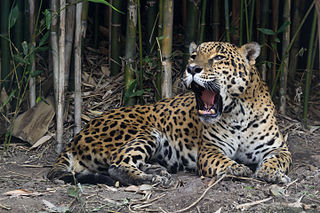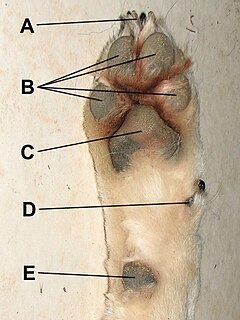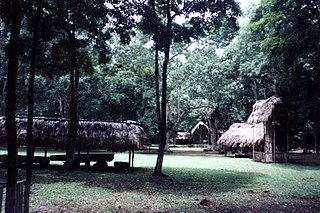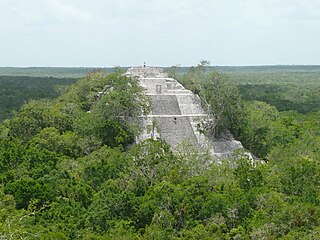
Naranjo is a Pre-Columbian Maya city in the Petén Basin region of Guatemala. It was occupied from about 500 B.C. to 950 A.D, with its height in the Late Classic Period. The site is part of Yaxha-Nakum-Naranjo National Park. The city lies along the Mopan and Holmul rivers, and is about 50 km east of the site of Tikal. Naranjo has been the victim of severe looting. The site is known for its polychrome ceramic style
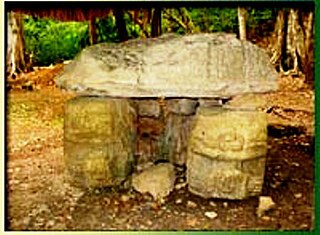
El Perú, is a pre-Columbian Maya archeological site occupied during the Preclassic and Classic cultural chronology periods. The site was the capital of a Maya city-state and is located near the banks of the San Pedro River in the Department of Petén of northern Guatemala. El Perú is 60 km (37 mi) west of Tikal.

During the 7th and 8th centuries in Mesoamerica, there was an evident shift in the roles women played in ancient Maya society as compared with the previous two centuries. It was during this time that there was a great deal of political complexity seen both in Maya royal houses as well as in the Maya area. Warfare was a significant factor in political competition and marriage was one of the ways that alliances were made between the different polities. This was accompanied by a shift in women's roles from wife and mother to playing integral parts in courtly life, such as participating in rituals involving the supernatural world and at times ruling individual polities.

Yich'aak B'alam was a Maya king of Seibal.

K'an II was a Maya ruler of Caracol. He reigned AD 618–658.

Tuun Kʻabʻ Hix was a Maya king of the Kaan Kingdom.

Scroll Serpent was a Maya ruler of the Kaan kingdom. He ruled from AD 579 to 611. He acceded on September 2.

Tajoom Ukʻab Kʻahk' was a Maya ruler of the Kaan kingdom. He became a king on March 28, 622.

Yuknoom Head was a king of the Maya Kaan Kingdom. He ruled AD 630-636.
Yuknoom Ch'een II', known as Yuknoom the Great, was a Mayan ruler of the Kaan kingdom, which had its capital at Calakmul during the Classic Period of Mesoamerican chronology.

Yuknoom Took' Kʻawiil was a Maya ruler of the Kaan kingdom (Calakmul).

Lady of Tikal, also known as Woman of Tikal, was a queen of the Mayan city of Tikal. She took the throne on April 19, 511 and reigned until about 527.
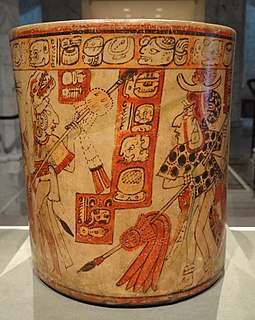
The Tikal–Calakmul wars were a series of wars between Tikal and Calakmul. The First Tikal–Calakmul War was the first of these wars. During this and following conflicts in Petén vassal states like Naranjo and Dos Pilas were often used. Though Yaxchilan was in the war it only had a minor presence at the beginning.
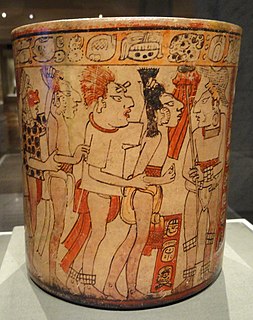
The Second Tikal–Calakmul War was the second in a series of wars between Tikal and Calakmul known as The Tikal–Calakmul wars. Tikal and Calakmul were some of the most prosperous cities in Peten during the classic period of Mesoamerican chronology. After the classic came the post classic which was characterized by a decline in Maya Civilization. During that time both Tikal and Calakmul were abandoned.

The Third Tikal–Calakmul War was the third in a series of wars between Tikal and Calakmul, two of the Major superpowers of the Maya Civilization during the classic period.
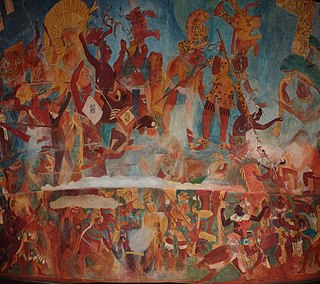
The Tikal–Calakmul wars were a series of wars, mainly between Tikal and Calakmul on the Yucatán Peninsula, but also with vassal states in the Petén Basin such as Copan, Dos Pilas, Naranjo, Sacul, Quiriguá, and briefly Yaxchilan had a role in initiating the first war.

